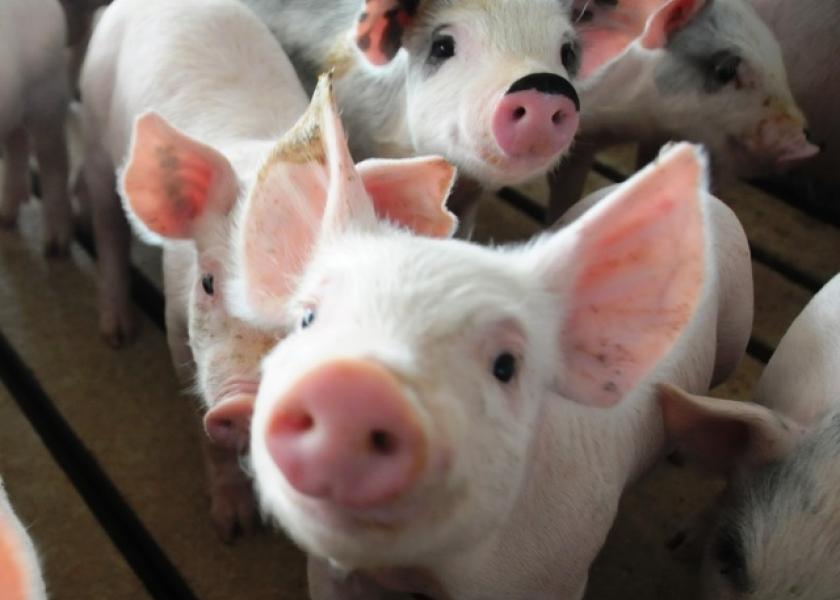Animal Agriculture and Antibiotics: 7 Things to Consider

The issue of antibiotic use in animal agriculture raises more than a few big questions, both inside and outside the ag community.
How much–or how few—antibiotics should be given to food animals? Who should be making those decisions—farmers, veterinarians, policymakers, doctors, food and restaurant companies, or consumers? How will we know what are truly best practices for animal health and human health?
“In all this conversation about antimicrobial resistance, we tend to get a little insular in our thinking,” said Jerome Lyman, speaking at Wednesday’s Farm Foundation Forum on antibiotic use in animal agriculture. “Whether we come from the medical profession, the animal health profession (or) we are producers, we are regulators, we write public policy, I think it's helpful to think a little bit from the point of view of a consumer. What I can share with you is that the consumer is pretty confused about this whole issue and … we are all at least partly to blame because we got stuck in our own circles and forgot to understand that what we are really dealing with here is the integrity and the perception of the food consumers eat, especially in the area of animal protein.”
Lyman, a former vice president at McDonald’s Corp., where he oversaw the fast-food giant’s global quality systems, joined speakers from the agriculture, policy, and regulatory communities at the Washington, D.C., event.
How can ag and others move forward on the complicated issue of antibiotics in animal agriculture? Here are seven factors influencing the issue, based on Wednesday’s discussion among the panelists and attendees.
- Customers are increasingly asking for meat that is antibiotic-free and more.
“It’s not an issue of no (antibiotic) residue,” said M. Terry Coffey, Ph.D., chief science and technology officer at Smithfield’s Hog Production Division. “It’s an issue of being raised without antibiotics.” Consumers also want antibiotic-free meat to be produced without growth promotants, without gestation crates, and with vegetarian feed, he said. ‘You are seeing a bundling of how animals might be raised tagging along with the ‘no antibiotics’” priority.
Is that economically viable? It all depends on how much consumers—and how many of those consumers—are willing to pay.
- Activist shareholders are influencing companies’ food supply chain decisions.
From Panera moving to cage-free eggs to Perdue’s announcement it would reduce its antibiotic use, such shifts are often influenced by public pressure.
“Boards of directors that ignore shareholder activism do so at their own peril,” said Jerome Lyman, a former vice president at McDonald’s, where he oversaw the fast-food giant’s global quality systems.
What else is behind food and restaurant companies’ choice to drop GMOs or move to organic ingredients? The need to make market-driven decisions ahead of everyone else in the industry.
“If you are behind the curve in a competitive environment, you have already lost,” Lyman said.
- The concerns about antimicrobial resistance, particularly in the human population, are not going away.
“We absolutely are not taking this problem seriously,” said Dr. Steve Solomon of Global Public Health Consulting, who stressed the need for lowering antibiotic use overall, not just on farms or in doctor’s offices.
- There is a lack of new antibiotics in development, both for humans and animals.
While antibiotic resistance doesn’t appear to be preventing vets from treating sick animals, it remains “a continual concern,” according to Coffey. “We don’t see a whole lot of development of new animal health drugs. It’s important in that environment that we take care of the ones that we have.”
Why is the pipeline so limited? Three reasons, according to Kathy Talkington, who leads The Pew Charitable Trust’s antibiotic resistance project.
First, there are scientific barriers—it’s difficult to create new antibiotics.
Second, there are regulatory hurdles in getting a drug approved for market and in the case of animal agriculture, worries about the drug’s usage impacting export demand.
Third, there are economic obstacles—pharmaceutical companies may decide that a potential new antibiotic doesn’t offer enough return on investment and stop developing the drug.
- There are, unfortunately, a lot of unknowns about the existence, volume, and quality of data already collected about the use of antibiotics in animal agriculture.
As producers, policymakers, and veterinarians alike try to establish what best practices should be, some are finding gaps in the detailed information they seek.
“How can we get better data?” asked one attendee. “We are left with sales data rather than use data.”
Others see the situation differently. “There’s a lot of data,” said Coffey. “There’s a lot more data than there is information.”
- Producers large and small—and their suppliers and vets--are facing potential record-keeping challenges in implementing the new veterinary feed directive.
Issued in 2015, this new rule covers animal drugs that are administered through animal feed, under the care of a vet. It is also likely to result in new processes, paperwork and perhaps data investments for vets and producers alike, which could be challenging for smaller ranchers and especially small independent feed retailers.
“If this is too complicated, will those people just get out of the business of providing those important tools to that segment of the industry?” Coffey asked. “What would that mean for their livelihoods going forward?”
- There needs to be greater collaboration and stronger relationships among those involved in the overlapping arenas of antimicrobial resistance, antibiotics and animal agriculture.
“There’s a tremendous amount of players … and not everyone approaches this from the same standpoint,” Solomon said. “There’s certainly a lack of trust.”
That will have to change if producers, policy makers, and others are going to effectively address the antibiotic question.
What do you think about antibiotic use in animal agriculture? Let us know in the comments.







